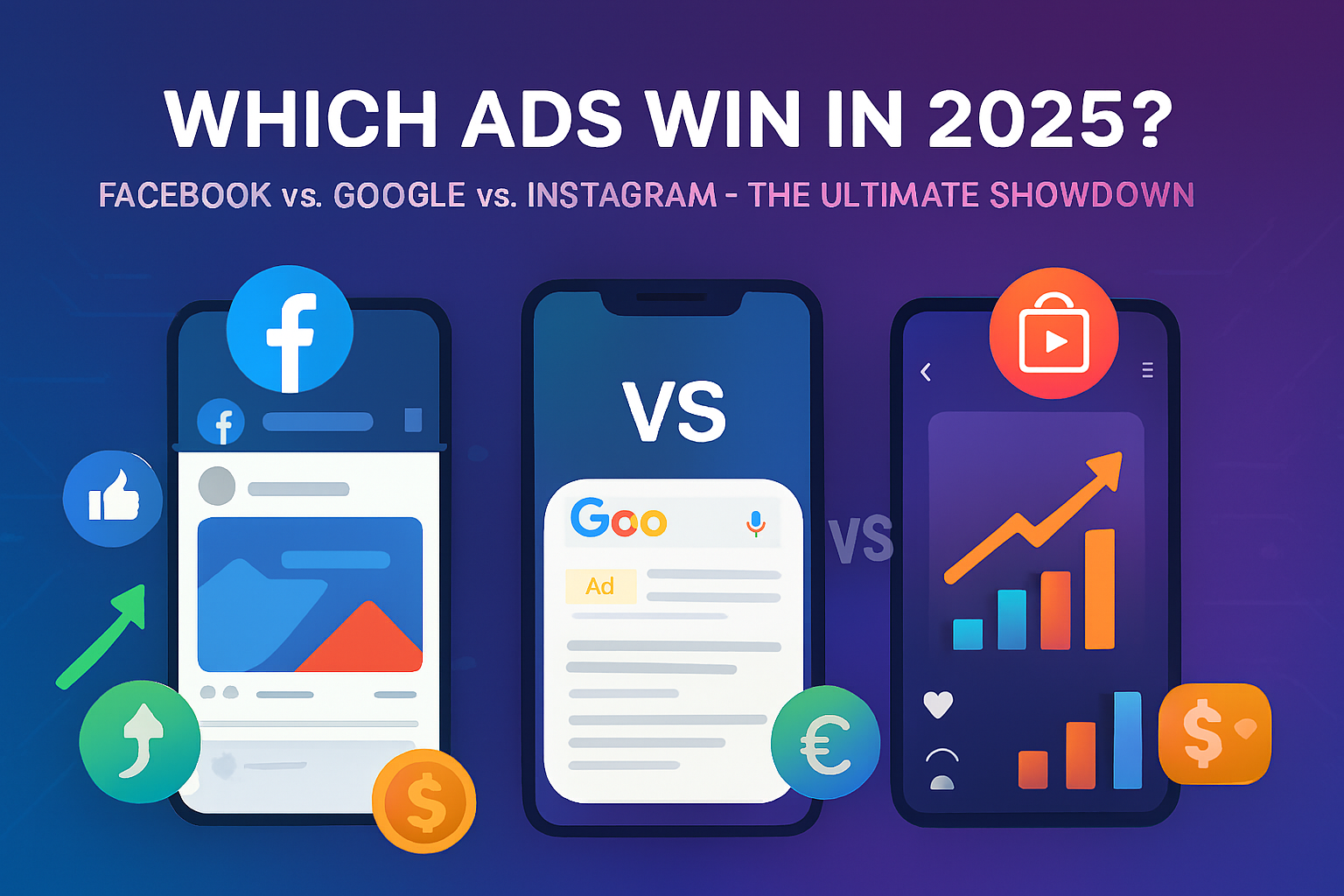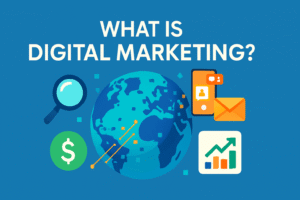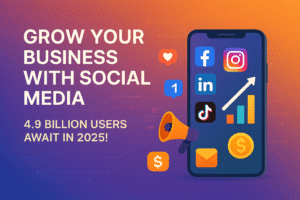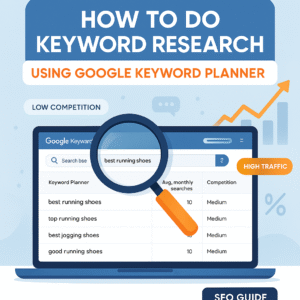Introduction
In today’s digital landscape, choosing the right advertising platform can make or break your small business’s growth. With Facebook Ads, Google Ads, and Instagram Ads each offering unique advantages, how do you decide where to invest your limited marketing budget in 2025?
This comprehensive guide will analyze all three platforms across key metrics like cost, targeting capabilities, and conversion potential. By the end, you’ll know exactly which ad network aligns with your business goals and how to maximize your advertising dollars in the coming year.
Understanding the Advertising Giants
Facebook Ads: The Social Selling Powerhouse
Facebook remains the world’s largest social network, with over 3 billion monthly active users. Its advertising platform offers:
- Precise demographic and interest-based targeting
- Multiple ad formats (carousel, video, lead ads)
- Robust retargeting capabilities
- Detailed analytics and reporting
Best for: Businesses focused on brand awareness, engagement, and retargeting website visitors.
Google Ads: The Intent-Driven Conversion Machine
Google dominates search with a 92% market share, making its advertising platform ideal for capturing commercial intent:
- Appears when users actively search for products/services
- Multiple campaign types (Search, Display, Shopping)
- Pay-per-click model means you only pay for results
- Powerful conversion tracking
Best for: Businesses with products/services people actively search for online.
Instagram Ads: The Visual Engagement Champion
Owned by Meta (Facebook), Instagram has become the go-to platform for visually appealing content:
- Over 2 billion monthly active users
- Strong focus on Stories and Reels
- Excellent for influencer collaborations
- Seamless shopping integrations
Best for: Visual brands targeting younger demographics (Gen Z and Millennials).
Cost Comparison: Where Will You Get the Most Bang for Your Buck?
| Platform | Average CPC (2025) | Average CPM (2025) | Minimum Daily Budget |
|---|---|---|---|
| Facebook Ads | $0.50 – $2.00 | $5 – $15 | $5 |
| Google Ads | $1 – $5 | $2 – $10 | $10 |
| Instagram Ads | $0.70 – $3.00 | $6 – $20 | $5 |
Note: Costs vary significantly by industry and competition.
Targeting Capabilities Compared
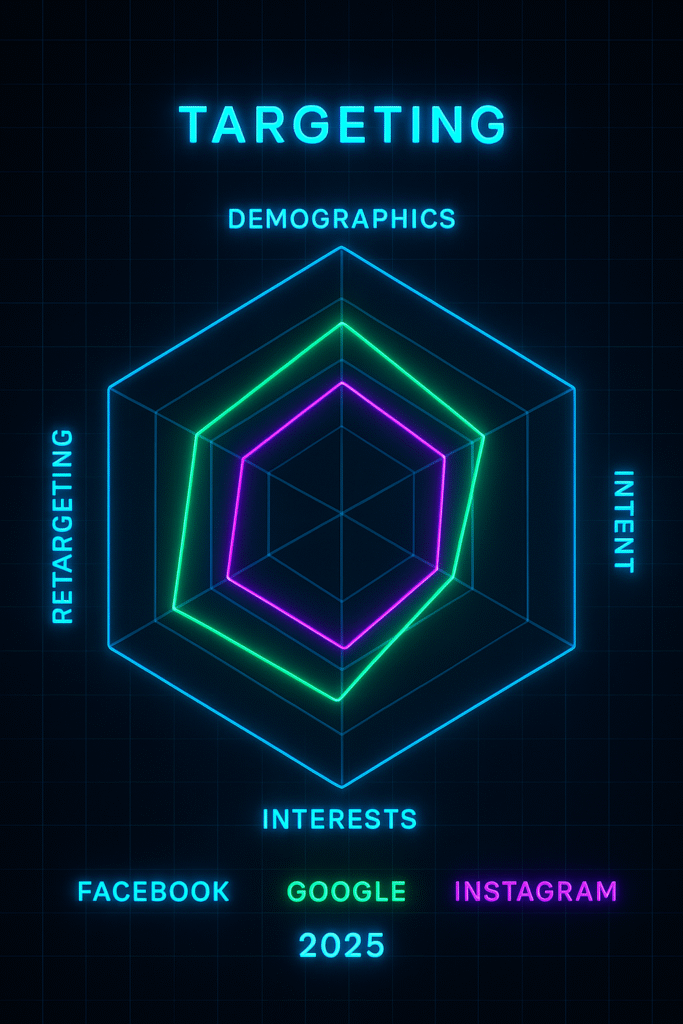
Facebook Ads:
- Demographic targeting (age, gender, location)
- Interest and behavior targeting
- Lookalike audiences
- Retargeting website visitors
Google Ads:
- Keyword targeting (search intent)
- Demographic targeting
- Remarketing lists
- Similar audiences
Instagram Ads:
- Similar to Facebook (same ad manager)
- Visual interest targeting
- Hashtag targeting
- Influencer collaboration options
Conversion Performance: Which Platform Delivers Better Results?
Conversion rates vary dramatically by industry, but generally:
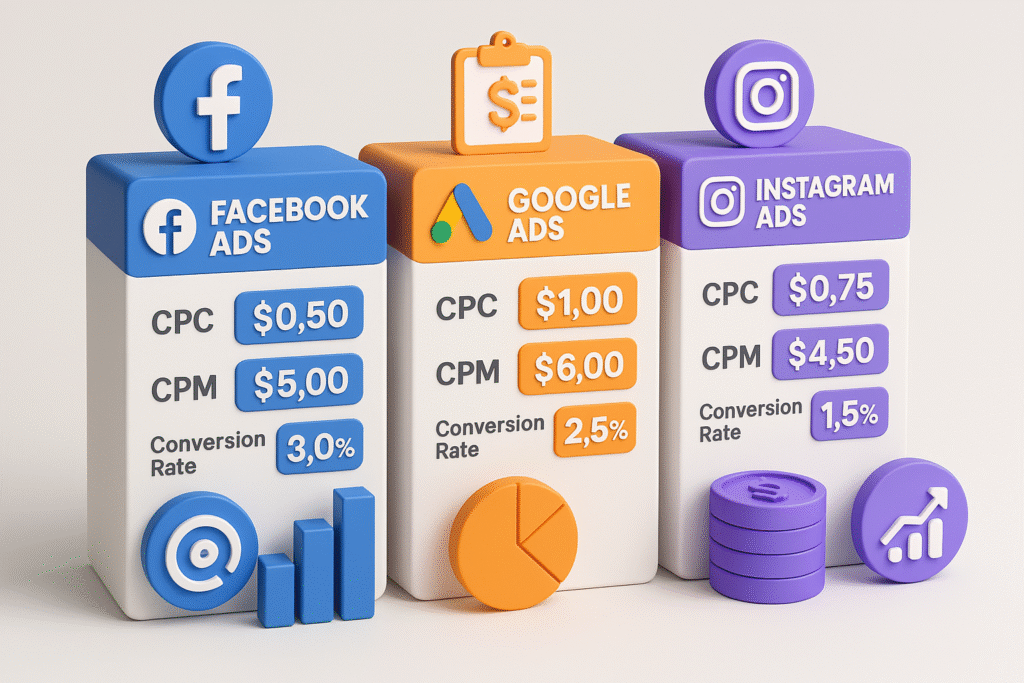
- Google Ads typically see the highest conversion rates (3-5% on average) because they capture high-intent users
- Facebook Ads average 1-3% conversion rates but often have lower costs
- Instagram Ads perform similarly to Facebook but often see higher engagement rates
Platform-Specific Strengths
When to Choose Facebook Ads:
- Building brand awareness
- Retargeting website visitors
- Local business promotion
- Lead generation for service businesses
When to Choose Google Ads:
- Selling products/services with clear search demand
- Immediate sales conversions
- B2B lead generation
- High-value products/services
When to Choose Instagram Ads:
- Visual products (fashion, beauty, food)
- Targeting younger demographics
- E-commerce with strong visuals
- Influencer collaborations
2025 Trends to Watch
- AI-Powered Ad Optimization: All platforms are investing heavily in machine learning for better targeting and automation.
- Video Dominance: Short-form video ads (Reels, Stories) continue to outperform static images.
- Privacy Challenges: With reduced tracking capabilities, first-party data becomes more valuable.
- Cross-Platform Integration: Meta’s Advantage+ campaigns blend Facebook and Instagram ads seamlessly.
Actionable Recommendations for Small Businesses
- Start with Your Goal:
- Sales? Try Google Shopping or Search ads
- Leads? Facebook Lead ads might work best
- Branding? Instagram Stories and Reels
- Test Small: Allocate $5-10/day to test different platforms and creatives
- Focus on Creatives: Invest in high-quality images/videos that stop the scroll
- Retarget Wisely: Use pixel tracking to follow up with interested users
- Monitor and Optimize: Review performance weekly and double down on what works
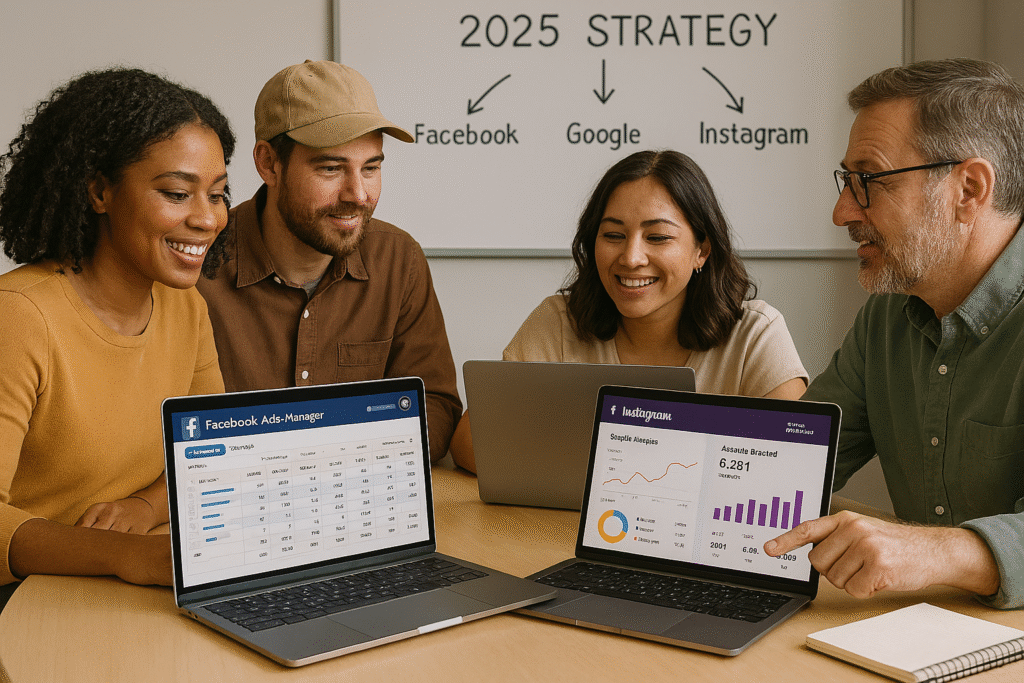
Conclusion: Which Platform Should You Choose?
The “best” platform depends entirely on your specific business needs:
- Choose Google Ads if you want to capture ready-to-buy customers
- Choose Facebook Ads for brand building and retargeting
- Choose Instagram Ads if your products are visually appealing and you target younger audiences
Many successful small businesses use a combination of all three, allocating budget based on which platform delivers the best results for each marketing objective.
Ready to launch your 2025 ad strategy? Start with small tests on each platform to see what works best for your unique business.
